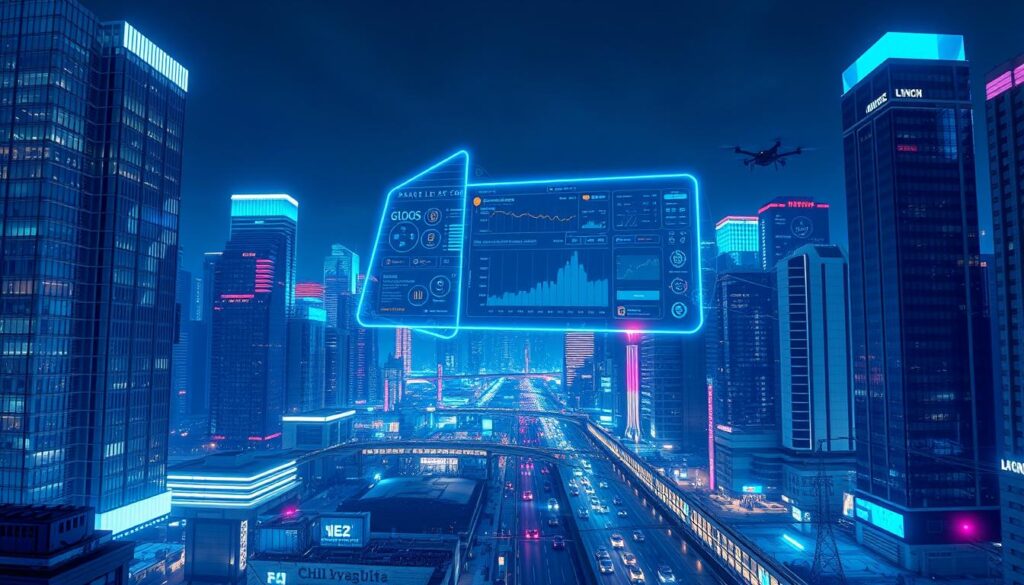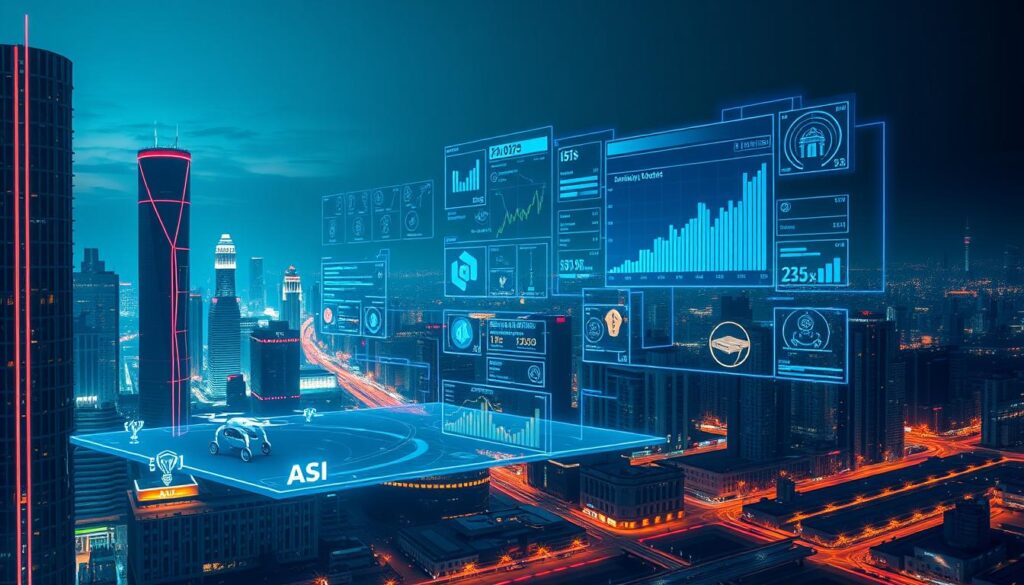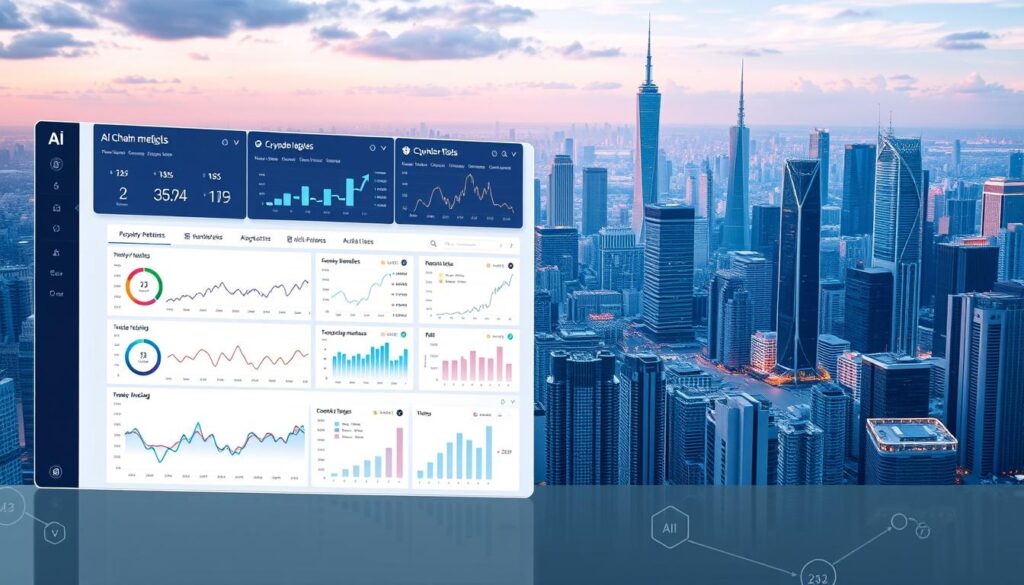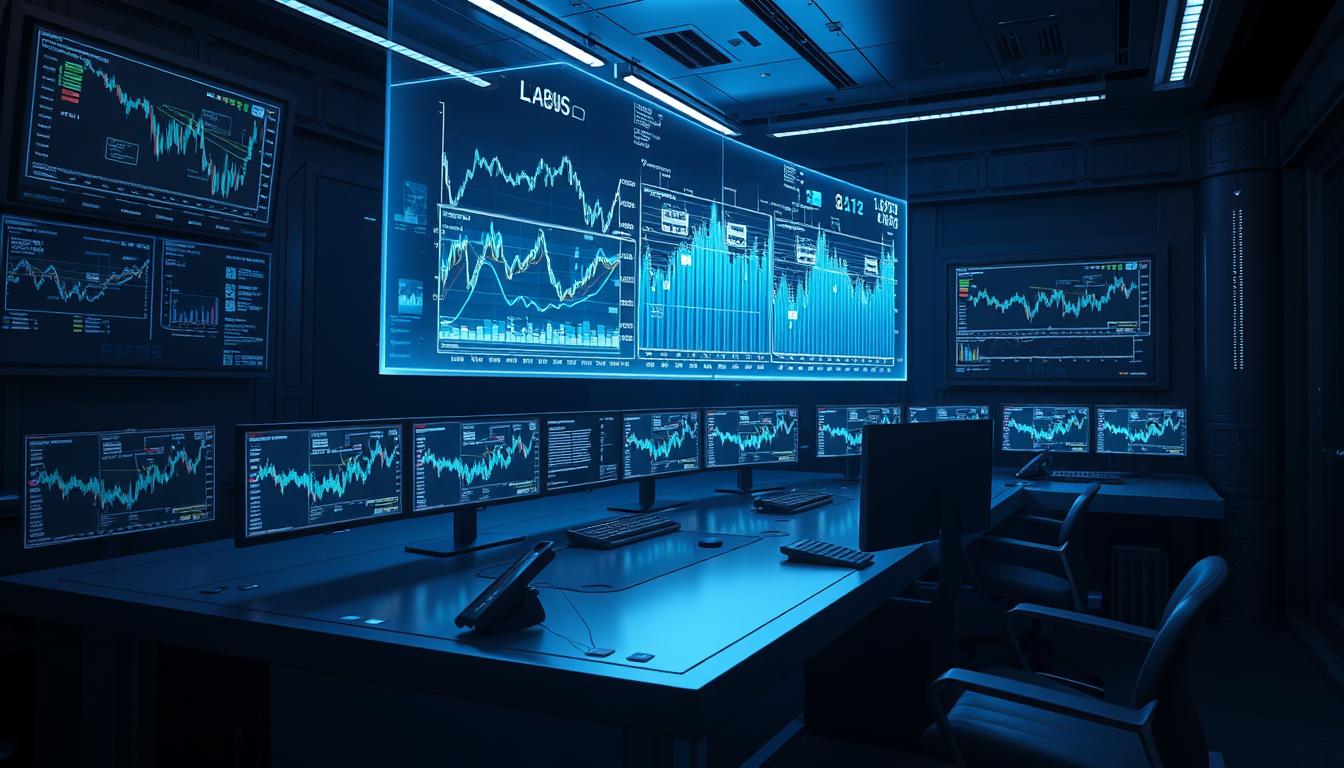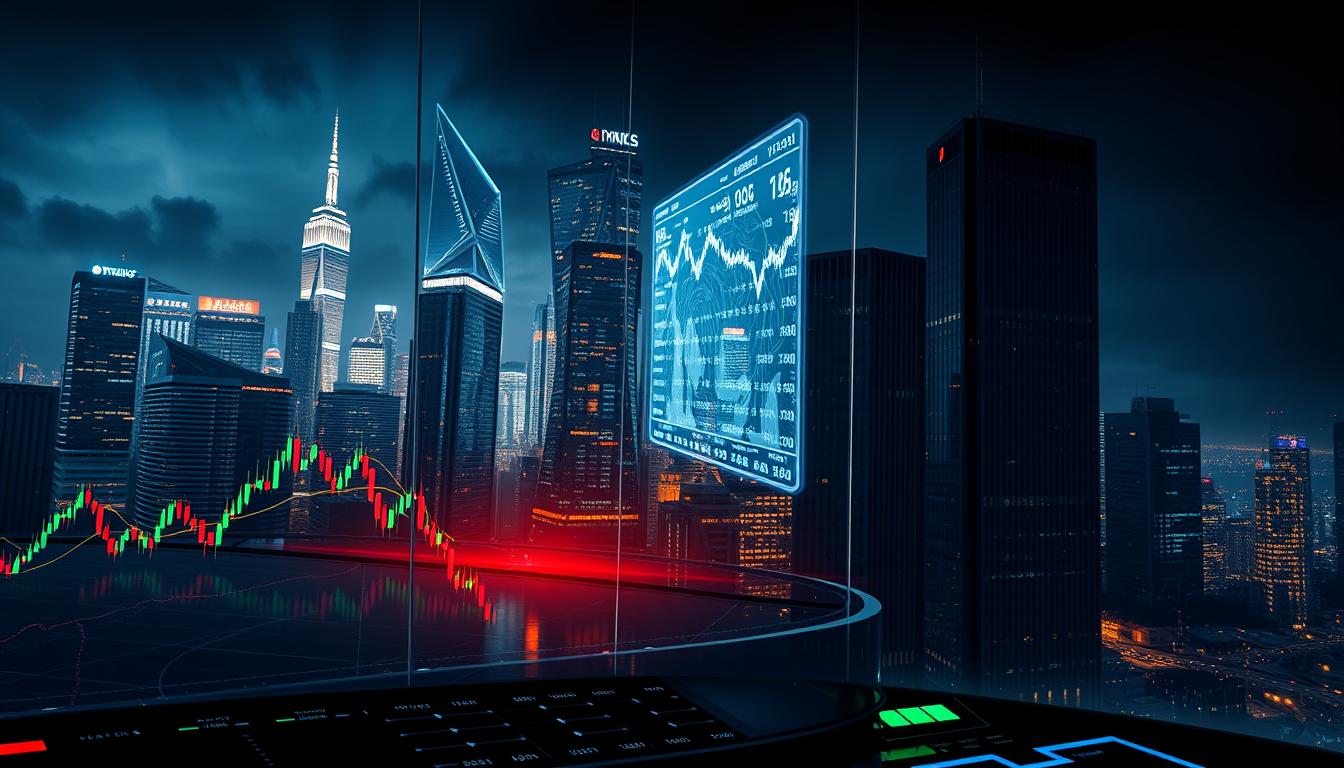Now Reading: AI Crypto Trading vs Manual Trading: A Comparison
- 01
AI Crypto Trading vs Manual Trading: A Comparison
AI Crypto Trading vs Manual Trading: A Comparison
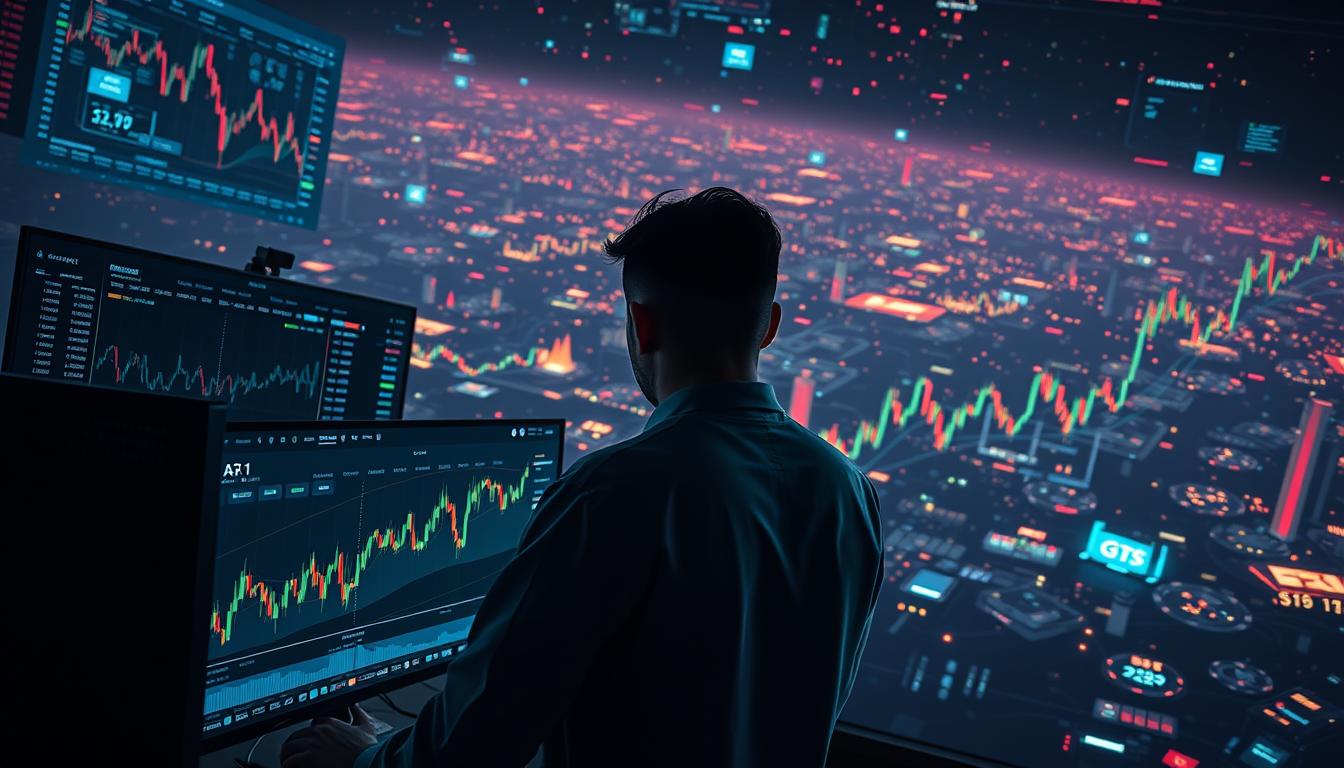
The financial world is evolving rapidly, with new tools reshaping how decisions are made. A growing debate centers on the effectiveness of automated systems versus human-driven approaches. Today, 63% of institutional players rely on advanced tools to enhance their strategies, blending technology with traditional methods.
Real-world examples, like Knight Capital’s $440M loss, highlight both the potential and risks of relying solely on automation. This article aims to provide an objective look at the speed, efficiency, and adaptability of these methods.
Hybrid approaches are gaining traction, with 38% of retail investors combining both techniques. Whether you’re new to the market or an experienced trader, understanding these strategies is crucial in today’s competitive landscape.
Introduction to AI Crypto Trading and Manual Trading
Modern trading strategies are being transformed by innovative tools and technologies. Two prominent methods dominate the scene: manual trading and automated systems. Each approach has its unique strengths and caters to different types of investors.
Manual trading relies on human-driven decision-making. Traders analyze charts, trends, and indicators using platforms like TradingView. This method requires dedication, with many spending four or more hours daily on market analysis. Tools such as RSI and MACD are commonly used to identify opportunities.
On the other hand, automated systems process vast amounts of data at incredible speeds. These algorithms can analyze 10,000+ data points per second, making decisions faster than any human. According to LuxAlgo, automated tools can execute trades 68% faster than manual methods.
Reaction times also differ significantly. While manual traders average 0.3 seconds, automated systems respond in just 0.0003 seconds. This speed advantage is crucial in fast-moving markets. Additionally, a 2023 CFTC report found that automated systems reduce emotional errors by 22%.
Hybrid models are gaining popularity, combining the best of both worlds. These systems use automated screeners to identify opportunities, while traders manually execute trades. Binance’s 2024 survey revealed that 57% of traders under 30 prefer automated tools, highlighting a generational shift.
Cost is another factor to consider. Manual trading starter kits can cost as little as $500, while advanced automated systems often exceed $10,000. This difference makes manual trading more accessible for beginners, while automated systems appeal to experienced investors seeking efficiency.
Key Differences Between AI Crypto Trading and Manual Trading
Investors today face a choice between human-driven and technology-powered strategies. These methods differ significantly in how they operate, offering unique advantages and challenges. Understanding these differences is essential for making informed decisions.
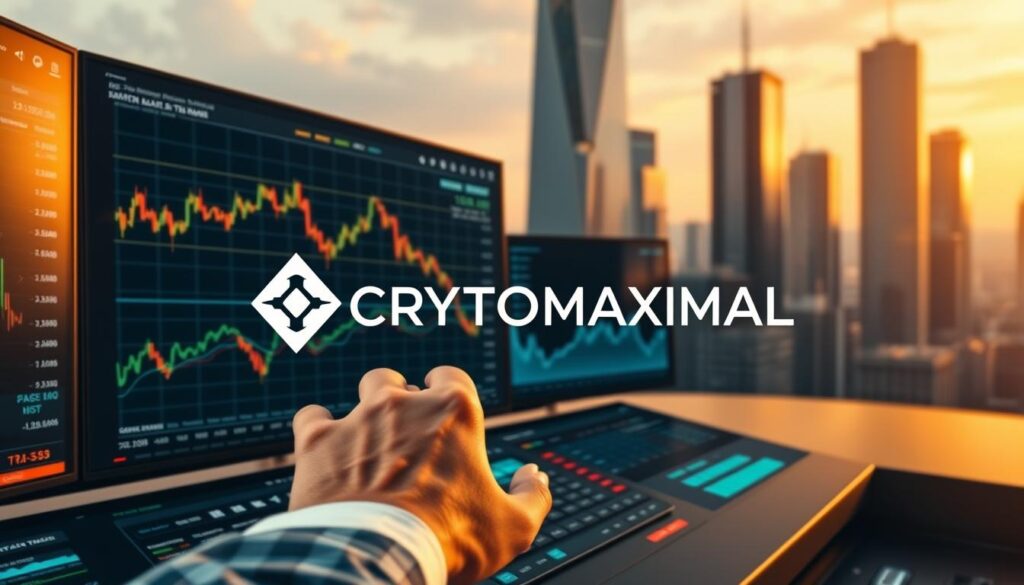
Speed and Efficiency
One of the most notable distinctions lies in execution speed. Automated systems process trades in as little as 800 microseconds, while manual methods average 0.3 seconds. This means technology is 300,000 times faster than human decision-making.
Here are some key points to consider:
- Automated systems can monitor over 50 market pairs simultaneously, compared to 3-5 for manual traders.
- According to BitMEX, automated strategies achieve 92% consistency, while manual methods reach only 68%.
- In bull markets, technology captures 22% more micro-trends, enhancing overall efficiency.
Emotional Bias vs. Objectivity
Human traders often struggle with emotional bias, which can cloud judgment. Studies show that 73% of manual traders admit emotions affect their profits. Automated systems, on the other hand, rely on algorithms and data, ensuring objective decision-making.
This objectivity reduces errors and improves consistency, making technology a reliable choice for many investors.
Pros and Cons of AI Crypto Trading
Automated systems have revolutionized how markets are approached, offering both opportunities and challenges. These tools provide unique advantages, but they also come with certain risks. Understanding both sides is essential for making informed decisions.
Advantages of Automated Systems
One of the most significant advantages is their ability to operate 24/7. This ensures traders can capture opportunities across global markets, including Asian and European overlaps. According to recent data, this capability increases opportunities by 83%.
Another benefit is precision. Automated systems execute trades with minimal slippage—just 0.01% compared to manual methods’ 0.15%. This accuracy can significantly impact profitability over time.
Here are additional benefits:
- Backtesting: Analyze a decade’s worth of data in just 14 minutes, allowing for refined strategies.
- Multi-strategy deployment: Run arbitrage and trend-following algorithms simultaneously for diversified results.
- Compliance: Automatically adapt to 93% of regulatory changes, reducing legal risks.
Disadvantages of Automated Systems
Despite their advantages, these systems are not without flaws. A notable risk is their vulnerability to market anomalies. For example, during the 2023 Flash Crash, automated systems were responsible for 61% of erroneous liquidations.
Another challenge is their reliance on historical data. While backtesting is useful, it doesn’t always predict future market behavior accurately. This can lead to unexpected losses in volatile conditions.
Finally, the cost of advanced automated tools can be prohibitive for beginners. While manual methods require less upfront investment, automated systems often demand significant resources.
For a deeper dive into the pros and cons of these methods, check out this detailed comparison.
Pros and Cons of Manual Trading
Manual trading remains a popular choice for many investors, offering unique benefits and challenges. This approach relies on human decision-making, allowing for greater flexibility and intuition in navigating the markets. However, it also requires significant time and effort, which can limit its effectiveness for some traders.
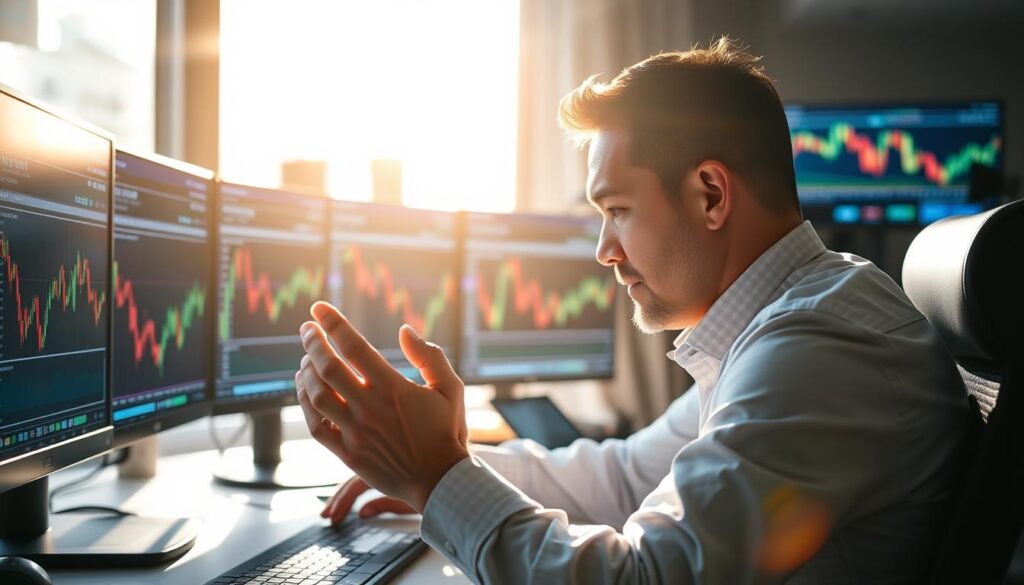
Advantages of Manual Trading
One of the biggest strengths of manual trading is its adaptability. During major news events, manual traders adjust their strategies 73% faster than automated systems. This ability to interpret complex situations quickly was evident during the FTX collapse, where manual responses were 29% faster.
Manual traders also enjoy creative freedom. They can combine trends like NFTs with traditional spot markets, opening up unique opportunities. Additionally, the low barrier to entry makes it accessible. Starting with just $100 is possible, compared to the $10,000 minimum often required for advanced tools.
Here are some other key benefits:
- Platform flexibility: Use over 12 chart types, compared to the 3-5 standard views in automated systems.
- Direct market feel: 61% of traders report a better sense of macro trends when trading manually.
Disadvantages of Manual Trading
Despite its advantages, manual trading has its drawbacks. One major issue is mental fatigue. 58% of traders report that exhaustion limits their trading hours, reducing their ability to capitalize on market movements.
Another challenge is the risk of emotional decision-making. Unlike automated systems, manual traders are prone to biases that can lead to costly mistakes. Additionally, the time-intensive nature of this approach can be a barrier for those with limited availability.
In summary, manual trading offers unique benefits but requires careful consideration of its limitations. Understanding these factors can help traders make informed decisions about their strategies.
AI Crypto Trading vs Manual Trading: Which is Better for You?
Choosing the right strategy depends on your unique needs and resources. Whether you’re a beginner or an experienced investor, understanding the factors that influence your trading style is crucial. Let’s explore what you should consider and how a hybrid approach might be the best fit.
Factors to Consider
Your goals, resources, and market focus play a significant role in determining the best method for you. Here are some key factors to evaluate:
- Capital size: Smaller budgets (under $5k) often favor manual methods, while larger investments (over $50k) benefit from automated scaling.
- Technical skill: Advanced tools require knowledge of Python or R, whereas manual trading relies on basic chart reading.
- Market focus: High-frequency trading demands automation, while event-driven markets often favor manual analysis.
- Risk tolerance: Automated systems typically have a 4% max drawdown, compared to 19% for manual methods.
- Time availability: If you have less than 5 hours a week, automation can save time and effort.
Hybrid Approach
Combining both methods can offer the best of both worlds. Hybrid traders often see 31% higher returns than those using pure strategies. For example, 68% of Coinbase Pro users blend automation with manual execution to maximize efficiency and flexibility.
This approach allows you to leverage technology for speed and precision while retaining the adaptability of human decision-making. It’s an ideal solution for those who want to balance innovation with control.
Real-World Applications of AI and Manual Trading
In today’s fast-paced financial landscape, the application of advanced tools and human expertise varies across different market scenarios. Understanding how these methods perform in real-world conditions can help investors make informed decisions.
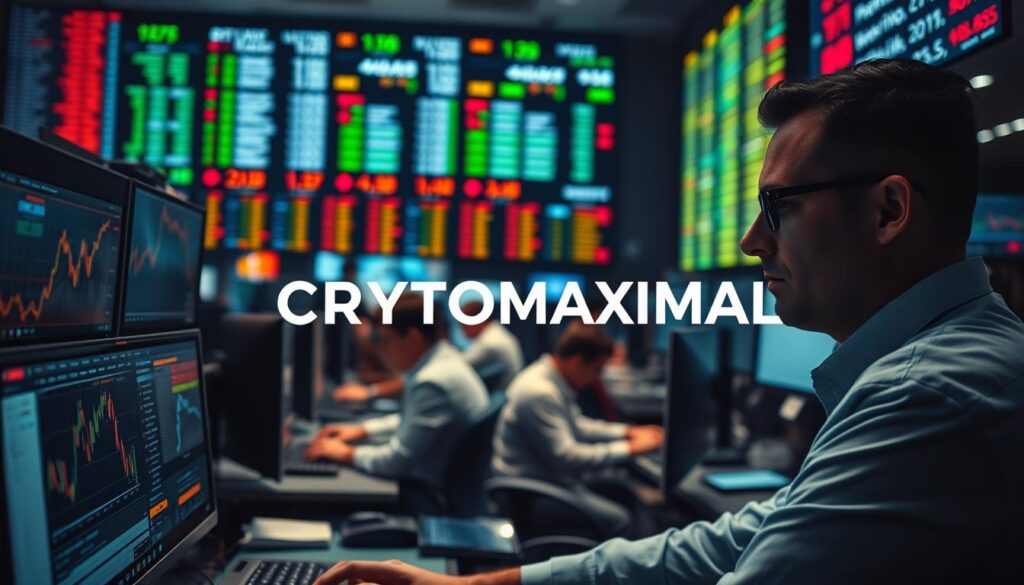
AI Trading in High-Frequency Markets
Automated systems excel in high-frequency environments, where speed and precision are critical. For instance, they handle 92% of Binance’s BTC/USDT trades under five minutes. This dominance is due to their ability to process 280,000 transactions per second, far surpassing manual methods.
These systems also excel in strategies like triangular arbitrage, capturing 0.07% profit per trade at scale. Additionally, they manage 12,000 limit orders for liquidity provision, ensuring smooth market operations. Statistical arbitrage and market-making strategies further enhance their efficiency, achieving a Sharpe ratio of 0.82 and capturing spreads with 0.03% success.
Manual Trading in Volatile Markets
Human-driven strategies shine in volatile conditions, where adaptability and intuition are key. During the Ukraine conflict, manual traders outperformed automated systems by 17%. Their ability to interpret news and events quickly allows them to adjust strategies in real-time.
Manual methods also provide a deeper understanding of market conditions, enabling traders to navigate uncertainty effectively. This approach is particularly valuable in multiple markets, where sudden shifts require quick, informed decisions.
By combining technical analysis with real-time insights, manual traders can capitalize on opportunities that automated systems might miss. This flexibility makes them a reliable choice in unpredictable environments.
Future Trends in AI and Manual Crypto Trading
The landscape of financial decision-making is shifting, with technology and human expertise playing pivotal roles. As markets evolve, both automated and manual methods are adapting to meet new challenges and opportunities. Understanding these trends can help investors stay ahead in a competitive environment.
The Growing Role of AI in Trading
Automated systems are set to dominate the future, with projected trading volumes reaching $19 billion by 2027. These tools are becoming more sophisticated, integrating advancements like quantum computing and natural language processing (NLP). For instance, quantum computing could reduce execution times to just 0.01 milliseconds by 2026.
NLP is another game-changer, enabling systems to parse SEC filings in real-time. This provides traders with actionable information faster than ever. Cross-chain arbitrage is also on the rise, with systems detecting opportunities across 14+ networks simultaneously. Regulatory compliance is another area where automation shines, adapting to over 200 jurisdictions effortlessly.
Predictive analytics is enhancing decision-making, achieving 93% accuracy in 15-minute forecasts. These advancements ensure that automated systems remain a cornerstone of modern trading strategies.
The Enduring Value of Manual Trading
Despite technological advancements, manual trading continues to hold significant value. A recent survey found that 41% of institutional traders maintain manual desks. This approach relies on human intuition, which remains unmatched in interpreting complex market scenarios.
Manual traders excel in volatile conditions, where adaptability is key. Their ability to process real-time information and adjust strategies quickly ensures consistent performance. This enduring value highlights the importance of balancing technology with human expertise.
In summary, the future of trading lies in leveraging the strengths of both automated and manual methods. By understanding these trends, investors can make informed decisions that align with their goals and resources.
Making the Right Choice for Your Trading Strategy
Selecting the right strategy requires careful evaluation of your goals and resources. Start by conducting a capability audit using a 34-point scoring system. This helps identify strengths and areas for improvement.
Begin with a small test phase, allocating just 5% of your capital. This minimizes risk while allowing you to refine your approach. Tools like LuxAlgo and TradingView can enhance your trading style by combining automation with manual insights.
Monitor performance using a 14-key metrics dashboard. Rebalance quarterly to adapt to market changes. Prioritize security by comparing cold storage and API risks. Tax optimization is also crucial—automated reporting can save time over manual logs.
Engage with top Discord groups for community insights. Maintain a 70/30 theory-to-practice ratio for continuous learning. Finally, define an exit strategy with pre-set protocols for seven scenarios. These steps ensure informed decisions and long-term success.
FAQ
What is the main difference between automated and human-driven methods in the crypto space?
Automated systems use algorithms to execute trades quickly, while human-driven methods rely on intuition and experience to make decisions.
How does speed impact the effectiveness of these approaches?
Automated tools can process data and execute trades in milliseconds, offering a significant edge in fast-paced markets. Human-driven methods may lag due to manual analysis.
Can emotional bias affect trading outcomes?
Yes, human traders may be influenced by fear or greed, leading to poor decisions. Automated systems operate without emotions, ensuring a more objective approach.
What are the advantages of using algorithms in trading?
Algorithms can analyze vast amounts of data, monitor multiple markets simultaneously, and execute trades with precision, improving efficiency and reducing risk.
Are there drawbacks to relying on automated systems?
Automated tools may struggle to adapt to sudden market changes or unexpected events, as they rely on predefined rules and strategies.
What benefits do human traders bring to the table?
Human traders can interpret news, charts, and market conditions with flexibility, adapting their strategies to seize unique opportunities.
What factors should I consider when choosing between these methods?
Consider your goals, risk tolerance, and preferred style. A hybrid approach, combining both methods, can also be effective.
How are these approaches applied in real-world scenarios?
Automated systems excel in high-frequency markets, while human-driven methods are often preferred in volatile or unpredictable conditions.
What does the future hold for these trading styles?
Automated tools are expected to play a larger role, but human intuition and adaptability will remain valuable in navigating complex markets.


